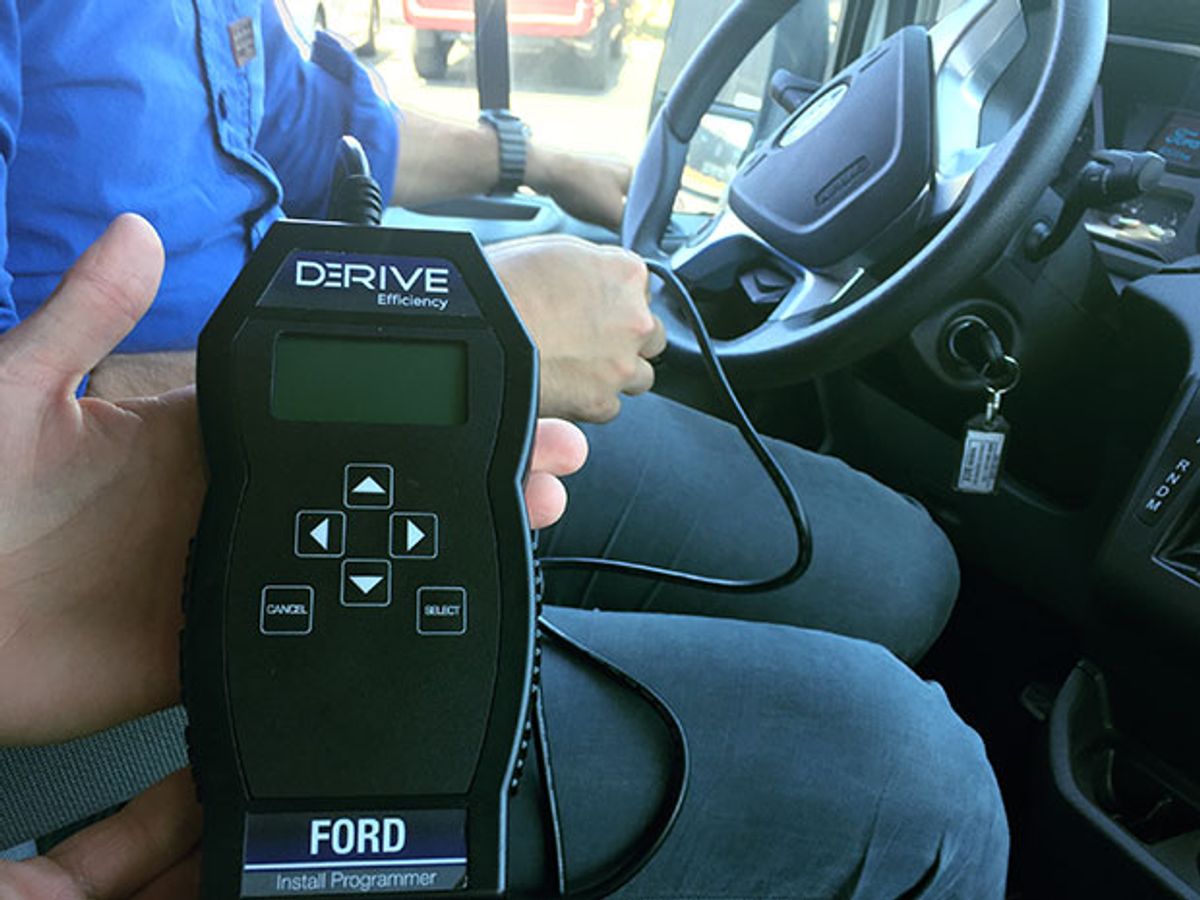I’m sitting in a rented Ford Transit van driving down El Camino Real in Palo Alto. The driver, Marco Della Torre, suddenly floors the gas pedal. And nothing happens—the car just keeps smoothly rolling along, just under the speed limit.
That’s because, just before we rolled out onto the road, Della Torre set an internal speed limit on the car. He also adjusted idle settings and shift points to make the car’s operation more fuel efficient. All that took him a couple of minutes, sitting in the passenger seat, with a gadget plugged into the van’s on-board diagnostics port. After making the adjustments, he unplugged the gadget and put it away.
Now you wouldn’t normally limit a car’s speed to under 35 miles an hour—that was just for this demo. But you might want to set a more reasonable limit, to prevent speeding on freeways. Or adjust rates of acceleration to make a driver use a car more gently.
The gadget Della Torre used in the demo was the Derive Systems X3. It can customize a car’s performance, adjusting idle speed, shift points, and torque and set speed limits. The company has been around since 2003, selling earlier versions of its device to car enthusiasts, who generally used it to make cars drive faster and more responsively.
Then, says Derive vice president Tom Kanewske, one of those car enthusiasts contacted the company, and said, “I get that you can turn a vehicle’s performance up, but I’m also a fleet manager, I’m interested in turning a bunch of vehicles down, can you do that, too?” That question set Derive on a path to developing an easy to use device to allow fleet managers to choose various performance parameters designed to make the vehicles last longer by mitigating harsh driving. It’s now being used on some 1.7 million vehicles.
The company’s secret sauce, Derive CTO Della Torre says, is its ability to unlock the engine control module. In some cases, Derive engineers had to figure out the “key,” but increasingly the company has developed partnerships with car manufacturers. A company spokesman says the technology works with all vehicles manufactured since 1996, but the company specializes in connecting to vehicles manufactured by GM, Ford, and a handful of non-U.S. companies.
The company is gathering data to improve its algorithms and customize settings for local conditions, accounting, say, for altitude and temperature, and create various bundles of settings for different uses.
Which brings us to that teen driver. Says Kanewske, “A parent with a teen driver probably doesn’t want a high degree of electronic throttle response,” that is, a fast acceleration when the gas pedal is suddenly depressed. “Or the ability to drive at high speeds.” The company isn’t marketing to these parents yet—and its fleet device looks industrial, and is only priced as a monthly subscription.
But, says Kanewske, a more consumer-friendly product is in the works. He won’t show me anything yet, but says, “We will be at CES in January.”
Tekla S. Perry is a senior editor at IEEE Spectrum. Based in Palo Alto, Calif., she's been covering the people, companies, and technology that make Silicon Valley a special place for more than 40 years. An IEEE member, she holds a bachelor's degree in journalism from Michigan State University.



